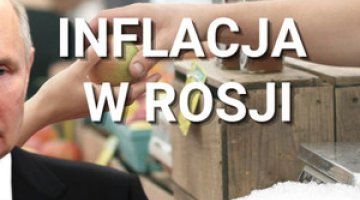The Steinmeier formula: in search of a compromise on the Donbas
On 1 October, the Ukrainian president Volodymyr Zelensky announced that an agreement had been reached to implement the so-called Steinmeier formula as part of resolving the conflict in the Donbas as part of the meeting of the trilateral contact group in Minsk. The parties also apparently came to an agreement on the next phase of the prisoner exchange, and on the withdrawal of all troops from the area of Petrivske and Zolote. The Ukrainian president maintained that the implementation of the so-called Steinmeier formula, for holding local government elections in the occupied parts of the Donbas, would be conditional on the complete withdrawal of all troops and Ukraine retaking control over the Russian-Ukrainian border. Zelensky stressed that “there will not be and there cannot be any elections in Donbas at gunpoint”, and that “there has not been and there will not be any capitulation”.
During the briefing Zelensky announced that under the proposed law the separate regions of the Donetsk and Lugansk oblasts would receive special status immediately after the elections were held in these areas and an OSCE report recognising their democratic conduct was published. The new law is supposed to replace the existing law on the special operation of local self-government in the occupied parts of Donetsk and Lugansk oblasts which expires on 31 December. Zelensky announced that the new law will be adopted by parliament “in close cooperation with the public” and “after public consultations have been held”. According to the Ukrainian leader’s statement, the details of the conditions and deadlines for implementing the agreement are to be discussed at the forthcoming summit in the so-called Normandy format, in which the leaders of Germany, France, Russia and Ukraine will participate.
Commentary
- Ukraine’s signing of the so-called Steinmeier formula does not mean that Ukraine and Russia have achieved any kind of far-reaching compromise in order to resolve the conflict in Donbas. Ukraine’s agreement to the formula was demanded above all by Russia; it wants the conditions under which the areas outside Kyiv’s control hold their elections to be incorporated into Ukrainian law. Russia will argue that Kyiv agreed to the elections, and should hold them as soon as possible in consultation with the leaders of the so-called ‘Donetsk and Lugansk People’s Republics’. In a statement, the separatist para-states rejected the option of restoring Kyiv’s control of the Ukrainian-Russian border, and demanded that they should be consulted on the content of the new law announced by President Zelensky granting the Donbas special status within the framework of the Ukrainian state.
- Kyiv has maintained its position that the elections may be held only after troops are withdrawn and it reassumes control of these areas, including the state border, because without these conditions it will be impossible to guarantee free elections in accordance with international standards. In practice, this approach will make it impossible to implement the so-called Steinmeier formula. It is thus possible that its signature is merely a tactical step by the government in Kyiv aimed at bringing about direct talks between Zelensky and Putin during the Normandy-format meeting (between the heads of states of Ukraine, Russia & France and the chancellor of Germany). Russia would agree to such a meeting on condition that Kyiv signed the formula, but Zelensky suggested in some of his earlier statements that he would only make the final decision on whether to invite the US and UK after such a meeting had been held in this format. A similar tone was adopted by the chairman of the Ukrainian parliament’s foreign affairs committee, Bohdan Yaremenko, who also stated that Ukraine had made the signing of the formula conditional on Russia’s agreement to continue the prisoner exchange programme.
- The legal implementation of the formula requires the passage of two additional acts of law which the Ukrainian parliament must pass: a new law on the so-called special status for the Donbas (introduced in September 2014 and renewed every year since, but which in practice is a dead letter), which includes the regulations contained in the formula, as well as a law regulating the conditions and timetables for holding early local elections in those areas of the Donbas not controlled by the Kyiv government. Zelensky started holding meetings to sound out the opinion of his Servant of the Nation party on the matter in the morning of 2 October; their result is still unknown. At the same time, the Ukrainian authorities will try to avoid introducing any provisions to guarantee the special status of the Donbas within the Ukrainian state into the Ukrainian constitution, as Moscow has demanded; instead it will probably work to ensure that the relevant legislation is passed as a law.
- The announcement that the so-called Steinmeier formula will be implemented carries a significant risk of social unrest. As early as the evening of 1 October, protests attended by several hundred people were held in Kyiv and other Ukrainian cities (e.g. Lviv and Kharkiv). The protests will continue on 2 October and over the following days. Some statements by the Ukrainian government suggest that they will work to calm the mood. On 2 October Yaremenko even denied that Ukraine had signed the document obliging it to implement the so-called Steinmeier formula. As he put it, the Ukrainian delegation to the tripartite contact group only gave a “written notification, addressed to the OSCE representative Martin Sajdik, that Ukraine is satisfied with the wording agreed by the advisers to the leaders of the states involved in the Normandy format”. However, the details of this agreement are still not known.




